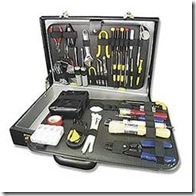It’s not just a range of pressures that are driving people to these new modes of work, but it is also a wealth of enablers that have emerged to unleash the potential for resolving these pressures in unprecedented and innovative ways.
Asynchronicity – The operative production model of the 20th Century was the serial, synchronous ‘assembly line.’ All of the resources for production lined up in one space and one shift. As knowledge work developed, this model continued to predominate with processes for planning, approving, assessing, etc. moving from mail tray to mail tray in just as methodical a fashion as a Model-T trundling down the line. The operative production model of the 21st Century is asynchronous parallelism. Email communication that can be read and responded to today, tomorrow or next week. Collaborative documents where multiple parties contribute.
Communications – A pervasive, increasingly flexible and capable communications network becomes the hub that unites the diverse pieces. It is not just the digital network that it the Internet, but it is also the increasingly sophisticated capabilities developed on top of it, the increasingly varied devices attached to it and the increasingly diverse contexts to which it has been applied.
Modern Management Principles – Knowledge work predominant in the service economy of the 21st century is much more results based than its manufacturing, production-line focus on activity. Modern management concepts like Peter Drucker’s ‘Management By Objective’ (MBO) harnesses approaches critical to the new modes of flexible working.
